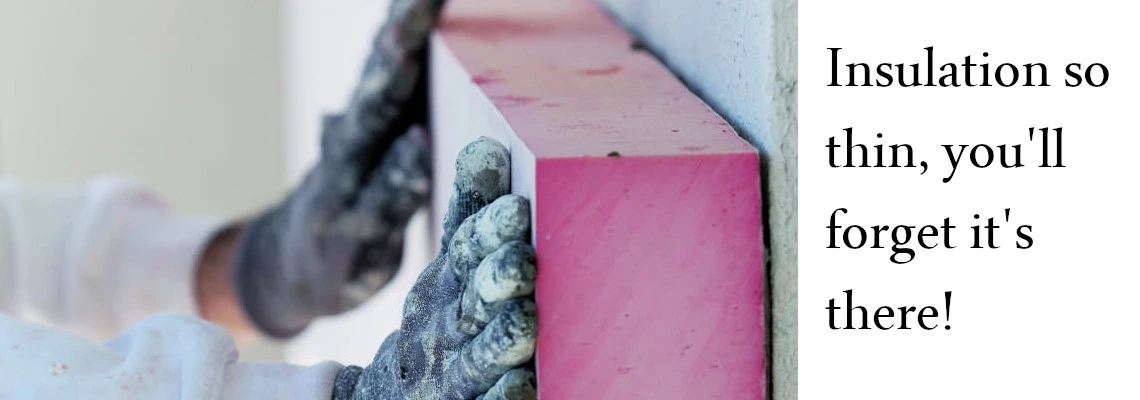
WHAT THICKNESS OF KINGSPAN FOAM INSULATION SHOULD YOU BUY?*
Insulation is one of the most effective ways to improve your home's energy efficiency and comfort. And if you're considering Kingspan Foam insulation, you're on the right track. But with so many thickness options available, it can be overwhelming to choose the right one for your needs. In this blog, we'll explore the factors you should consider when selecting the appropriate thickness of Kingspan Foam insulation. From building type to budget, we'll help you make an informed decision and get one step closer to a more energy-efficient and comfortable home. So, let's dive in!
 Table of contents
Table of contents
- WHAT THICKNESS OF KINGSPAN FOAM INSULATION SHOULD YOU BUY?
- WHY CHOOSING THE RIGHT THICKNESS OF INSULATION IS CRUCIAL
- THE KEY ROLE OF THE FIRST 100MM OF INSULATION
- TYPICAL THICKNESSES OF KINGSPAN PRODUCTS USED IN THE UK
- Underfloors
- Floors
- External walls
- Cavity walls
- Façades
- Internal walls
- Roofs
- CONCLUSION
WHY CHOOSING THE RIGHT THICKNESS OF INSULATION IS CRUCIAL
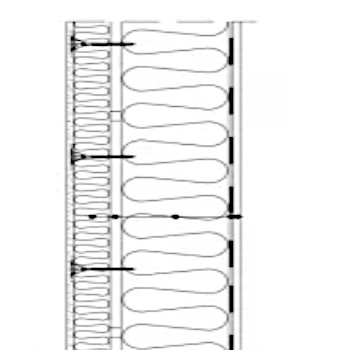 Choosing the right thickness of insulation is crucial for several reasons. Firstly, insulation plays a significant role in improving a building's energy efficiency and reducing energy bills. A poorly insulated home or building can result in heat loss, which means your heating system will have to work harder and use more energy to maintain a comfortable temperature. This can lead to higher energy bills and unnecessary environmental impact.
Choosing the right thickness of insulation is crucial for several reasons. Firstly, insulation plays a significant role in improving a building's energy efficiency and reducing energy bills. A poorly insulated home or building can result in heat loss, which means your heating system will have to work harder and use more energy to maintain a comfortable temperature. This can lead to higher energy bills and unnecessary environmental impact.
Secondly, the thickness of insulation can affect its thermal performance. The thicker the insulation, the better it can resist heat flow and maintain a consistent indoor temperature.
The insulation's thermal resistance is measured by its R-value, and a higher R-value indicates better insulation performance. It's important to choose the appropriate insulation thickness to achieve the desired R-value for your specific needs.
Thirdly, the choice of insulation thickness will depend on the type of building and climate zone.
For instance, buildings in colder climates require thicker insulation to maintain warmth, while those in warmer climates require insulation that can resist heat gain. Moreover, building codes may specify minimum insulation thickness requirements for various areas in a building.
In summary, choosing the right thickness of insulation is crucial for energy efficiency, thermal performance, building codes compliance, and cost savings.
THE KEY ROLE OF THE FIRST 100MM OF INSULATION
 The first 100mm of insulation is a critical layer in a building's thermal envelope. It plays a key role in reducing heat transfer, improving energy efficiency, and preventing moisture-related issues. Therefore, it's essential to choose the appropriate thickness of insulation for this layer to achieve optimal building performance and indoor comfort.
The first 100mm of insulation is a critical layer in a building's thermal envelope. It plays a key role in reducing heat transfer, improving energy efficiency, and preventing moisture-related issues. Therefore, it's essential to choose the appropriate thickness of insulation for this layer to achieve optimal building performance and indoor comfort.
Products such as Kingspan's phenolic insulation boards are particularly suitable for this purpose, as they have excellent thermal performance properties and can achieve high R-values even at relatively low thicknesses. This makes them an excellent choice for achieving the desired insulation thickness in the critical first 100mm layer while minimising the overall thickness of the insulation.
In addition to their thermal performance, Kingspan's phenolic insulation boards offer several other benefits. They are lightweight, easy to install, and have good fire resistance properties.
In summary, selecting the appropriate insulation thickness in the first 100mm of the building envelope is critical for achieving optimal energy efficiency and indoor comfort. Kingspan's phenolic insulation boards are an excellent choice for this purpose, as they offer outstanding thermal performance properties at low thicknesses, making them an effective solution for reducing heat transfer while minimising overall insulation thickness.
TYPICAL THICKNESSES OF KINGSPAN PRODUCTS USED IN THE UK
Kingspan is a leading manufacturer of insulation products used in a variety of applications across the construction industry. The company's range of products includes solutions for insulating floors, walls, roofs, ceilings, and attics, among others.
When it comes to selecting the appropriate thickness of Kingspan insulation products for a given application, several factors must be taken into consideration, including the building's location, the intended use of the space and local building regulations. In the UK, typical thicknesses of Kingspan insulation products used in various applications are as follows:
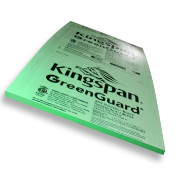 Underfloors
Underfloors
For insulating underfloors, Kingspan's Greenguard XPS Insulation Board is a popular choice, typically installed at a thickness of 30mm to achieve an R-value of 0.85 m²K/W. This product is suitable for use under concrete slabs, screeds, and other floor finishes, and offers excellent moisture resistance and compressive strength of 300kPa.
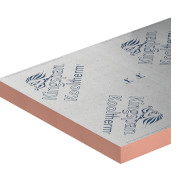 Floors
Floors
For insulating ground floors, Kingspan's Kooltherm K103 Floorboard is a popular choice, typically installed at a thickness of 100mm to achieve an R-value of 5.55 m²K/W. This product is suitable for use in both new and existing buildings, and offers excellent thermal conductivity and fire performance. In addition, the product has a low profile, making it ideal for applications where space is limited, such as retrofitting insulation to existing floors.
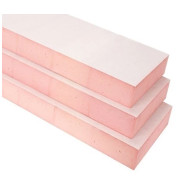 External Walls
External Walls
For insulating external walls, Kingspan's Kooltherm K5 External Wall Board is a popular choice, typically installed at a thickness of either 50mm or 70mm to achieve an R-value of 2.50 m²K/W or 3.5 m²K/W respectively.
Kingspan Kooltherm K5 External Wall Board is commonly used for insulating masonry external walls. It can be covered with a variety of finishes such as the K-rend or EWI systems and provides excellent thermal performance with a low profile.The K5 External Wall Board is also suitable for use in new and existing buildings, and can be used in combination with other insulation products to achieve higher levels of thermal performance.
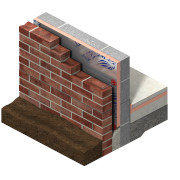 Cavity walls
Cavity walls
External wall cavity insulation can be achieved with Kingspan products such as K108 Cavity Board and K106 Cavity Board.
The K108 Partial Cavity Board from Kingspan is a popular choice for insulating external wall cavities.
"Partial fill" refers to the installation method of the K108 Cavity Board, where the board is only installed within a portion of the cavity between the inner and outer leaves of an external wall. This is because leaving a gap in the cavity helps to improve the ventilation within the wall.
The K108 Partial Fill Cavity Board is available in thicknesses ranging from 40mm to 100mm. In the UK, building regulations specify minimum thermal insulation standards for external walls, which vary depending on the type of building and its location. For example, for a new dwelling in England, the minimum required U-value (a measure of heat loss) for external walls is 0.18 W/m²K, which can typically be achieved using a 100mm thick K108 board.
Kingspan's K106 Full Fill Cavity Board is another option for insulating external wall cavities. Unlike partial fill boards, which are installed between the inner and outer leaf of the wall, full fill boards are designed to completely fill the cavity. The K106 Full Fill Cavity Board is available in thicknesses ranging from 80mm to 115mm. Building regulations in the UK also specify minimum thermal insulation standards for external walls when using full fill cavity boards, with the required thickness varying depending on the specific project and its location. For example, to achieve the minimum required U-value of 0.18 W/m²K for a new dwelling in England, a 115mm thick K106 Full Fill Cavity Board may be required.
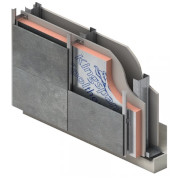 Façades
Façades
Kingspan's K15 Rainscreen Board is a popular choice for insulating building façades, particularly those with a ventilated rainscreen system. The K15 board is available in thicknesses ranging from 50mm to 100mm, with the most commonly purchased thicknesses being 70mm, 80mm, and 100mm.
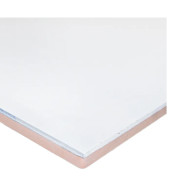 Internal Walls
Internal Walls
For insulating internal walls, Kingspan offers a range of products that provide excellent thermal performance while also being easy to install. One such product is the TP10 Insulation Board, which is suitable for use in both timber and steel frame constructions and can be installed between studwork or as a dry lining. The board is available in a range of thicknesses from 20mm to 150mm, allowing for flexibility in achieving the required thermal performance. The most commonly purchased thicknesses are 50mm and 100mm. These thicknesses provide good thermal performance while also being easy to install between standard studwork.
Another popular product for internal walls is the K118 Insulated Plasterboard, which combines insulation and plasterboard in one product, making installation quicker and easier. The K118 Insulated Plasterboard is typically available in thicknesses of 32.5mm to 92.5mm and offers excellent thermal performance with a low profile, making it ideal for applications where space is limited.
The K118 Insulated Plasterboard is commonly purchased in a thickness of 62.5mm, which is directly related to Building Regulations requirements. This thickness is often chosen as it meets the required U-value for internal walls, making it an ideal choice for achieving compliance with building regulations.
For timber frame constructions, the K112 Framing Board is a popular choice, providing both insulation and structural support. The K112 Framing Board can be used in a variety of applications, including internal walls, floors, and roofs, and is available in thicknesses ranging from 50mm to 120mm. This product is ideal for achieving high levels of thermal performance while also providing structural support, making it a cost-effective solution for timber frame constructions.
The K112 Framing Board is commonly purchased in thicknesses of 100mm and 75mm for insulating internal walls, with 50mm thickness being less commonly used. These thicknesses provide excellent thermal performance and are easy to install between timber frames, making them a popular choice among builders and contractors.
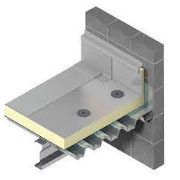 Roofs
Roofs
For insulating flat roofs, Kingspan's TR26 and TR27 Insulation Boards are commonly used, with thicknesses ranging from 100mm to 200mm. For pitched roofs, the Kooltherm K107 range is often used, with thicknesses ranging from 25mm to 150mm depending on the roof's slope and desired thermal performance.
Kingspan Therma TR26 is a thermal insulation for flat roofs or pitched roofs with a slope of up to 15 degrees. This insulation consists of a polyurethane foam core with an aluminium foil facing on both sides. The most commonly used thicknesses of Kingspan Therma TR26 are 80 mm,100 mm,120 mm and 150 mm.
Kingspan Thermaroof TR27 is another type of thermal insulation that can be used with a variety of waterproofing and green roof systems. Its highly effective PIR rigid insulation core is faced on both sides with a coated glass tissue.The most commonly used thicknesses of Kingspan Thermaroof TR27 are 100mm and 130mm.
Kooltherm K107 also provides exceptional thermal performance, with a thermal conductivity as low as 0.018 W/mK. This makes it an ideal choice for projects where space is at a premium. When it comes to insulating roofs with K107, a thickness of 150 mm between the rafters is often chosen, followed by the installation of an additional 50 mm layer on top of the rafters.
CONCLUSION
In summary, Kingspan insulation achieves excellent thermal performance even in relatively thin insulation thicknesses. This is due to the high-quality materials and advanced manufacturing techniques used in Kingspan insulation products. In fact, Kingspan is known for its ability to provide superior thermal insulation in thinner products, which can save space and reduce costs.
However, the high quality and superior performance of Kingspan insulation products come at a premium price compared to other insulation materials. The cost of Kingspan insulation may be higher than other materials on the market, but its superior thermal performance and space-saving benefits can make it a cost-effective choice in the long run, especially for commercial and industrial projects where energy efficiency and sustainability are important factors.
Related articles:
Kingspan vs Rockwool. A comparison of thermal insulation performance.
Cheaper alternative/equivalent to kingspan insulation
*All the information provided in the content published on Insulationgo blog is for informational and educational purposes only. Insulationgo LTD makes every effort to ensure the accuracy and timeliness of the content, but we do not assume any responsibility for any errors or omissions.
The information presented on this blog should not be considered as professional advice or a substitute for consulting relevant experts. Before making any purchase decisions or taking action based on the information presented here, it is strongly recommended to contact the product manufacturer directly to verify the details and ensure its suitability for your specific needs.
By using this blog, you acknowledge and agree that Insulationgo LTD shall not be held liable for any damages, losses, or inconveniences arising from the use or reliance on the information provided herein. This limitation of liability applies to all users of the blog, including but not limited to visitors, readers, and subscribers.










































































































